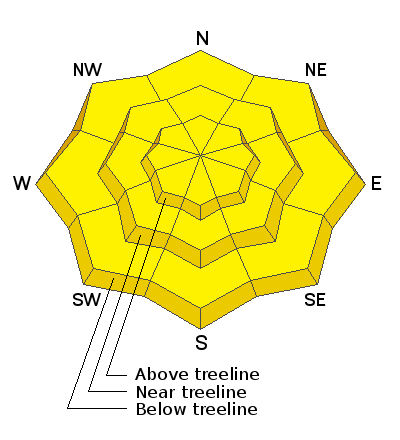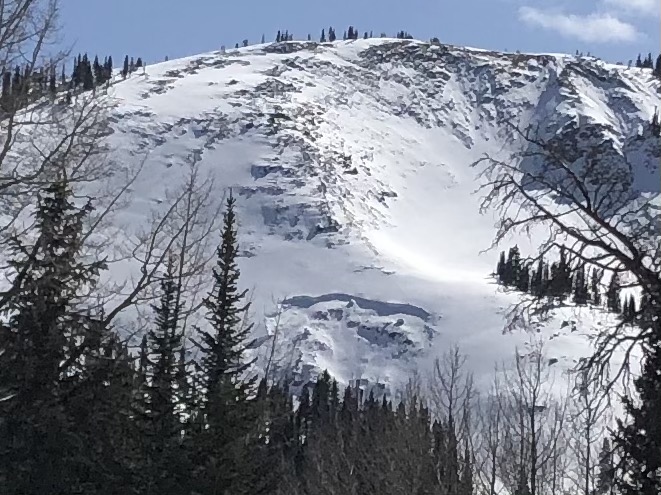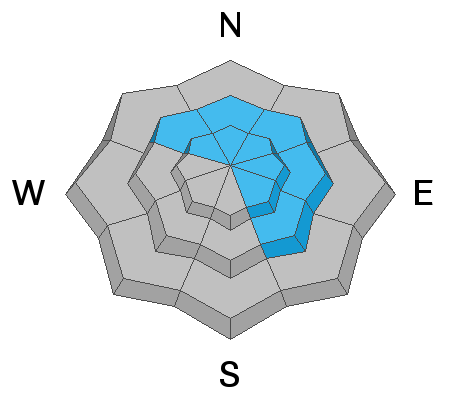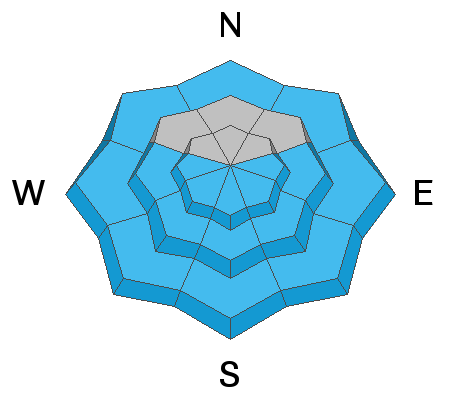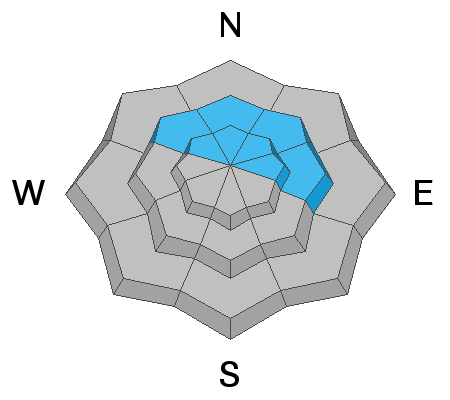The 2021 Spring Awareness Campaign is underway. Help us save lives through avalanche forecasts and education. Consider making a donation to show your support
HERE.
The Geyser Pass Road has been plowed and is already melted down to the dirt in many sections. Patches of ice and snow exist and it turns muddy as the day heats up. All-wheel-drive recommended.
The Lower Utah Nordic Alliance (LUNA) groomed into Gold Basin yesterday.
24 Hour Snow 0" 72 Hour Snow 0" Base Depth in Gold Basin 68" Wind S 20-30 G40 Temp 36F
It's warm, windy, and cloudy this morning and it did not freeze last night. As advertised, a deep Pacific trough is moving across the Great Basin spreading clouds into our region. Precipitation will be limited to northern Utah and north-central Colorado as the storm tracks to the southeast. But as I said yesterday, at least we'll get wind. Today expect cloudy skies this morning becoming mostly sunny by afternoon. Southwest winds will be strong with gusts up to 50 mph along ridge tops. High temps at 10,000' will be in the low 40's. We'll see a slight chance for a trace to an inch of snow tonight and tomorrow. Skies should become partly sunny later in the day tomorrow with mostly sunny skies on Monday. The next system to affect the area comes on Tuesday.
Snowpack Discussion
Clouds, strong winds, and a lack of an overnight re-freeze would cause me to think about doing something other than skiing or riding today. Overall conditions are variable and crusty with dry, soft snow only available on sheltered northerly aspects. Time and warm temperatures have helped the snowpack adjust to the large snow load we received last weekend but it's still possible to trigger a deep and dangerous avalanche on a buried persistent weak layer of sugary, faceted snow. This weak layer exists on slopes that face NW-N-E-SE, and thin snowpack areas consisting of steep, rocky terrain are the most likely trigger points. Though the snow surface is mostly crusted over, strong southerly winds may be able to etch out some snow for transport and you'll need to be alert to developing fresh wind slabs today. And finally, with the lack of a freeze, expect the potential for loose wet avalanches when temps warm and the sun comes out later today.
In our travels up to Geyser Pass yesterday, Brian Murdock and I observed this avalanche from the March 13 cycle on a north aspect at around 11,000'. A nasty pocket like this could ruin your day or your life. Note the complex and featured terrain punctuated with rocks. The "pockety" nature of these avalanches leaves you uncertain as to where they may be found, but thin snowpack areas around steep and rocky terrain are the most likely. Steep convexities are also areas of concern.

